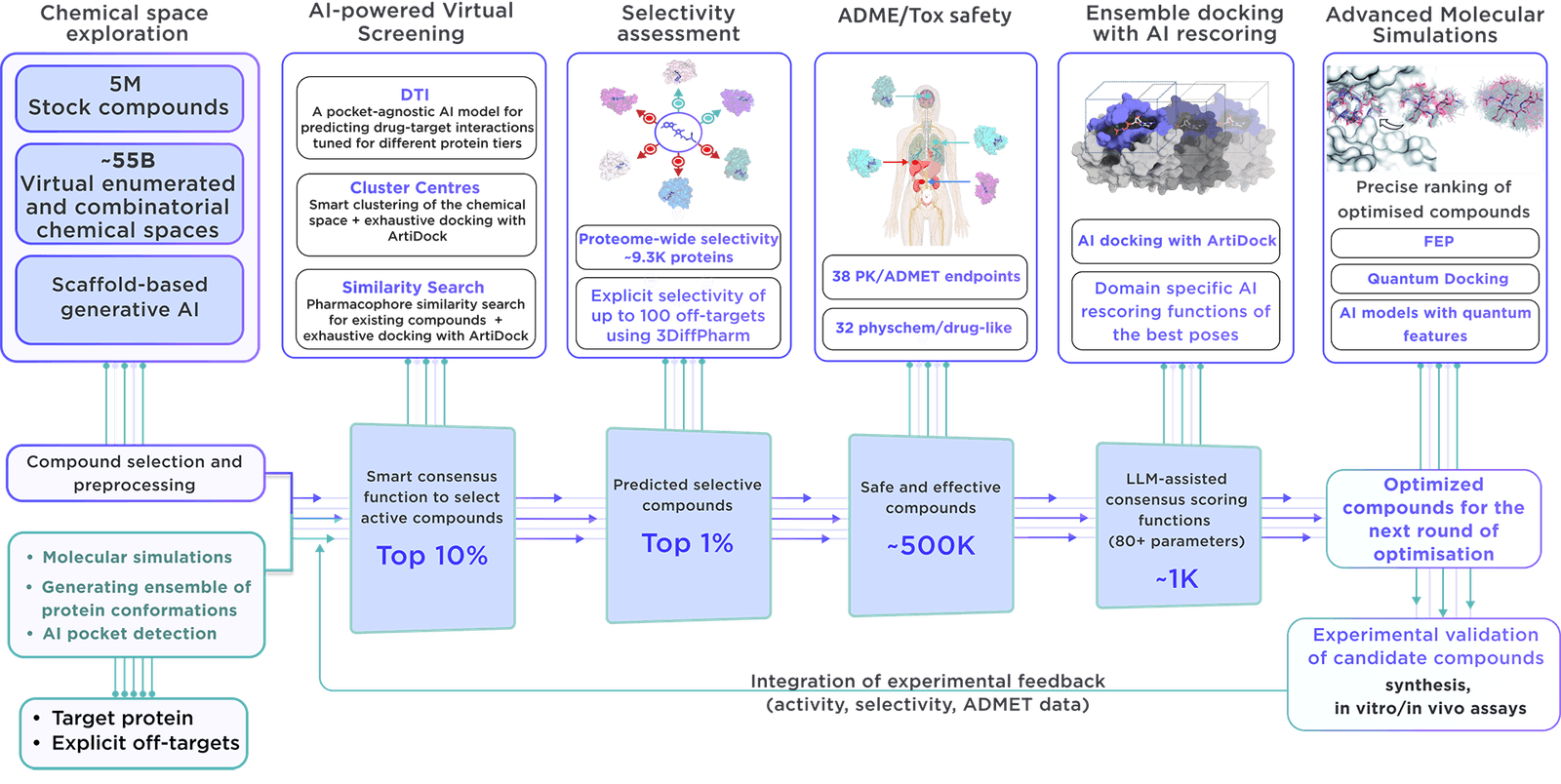Focused On-demand Libraries - Receptor.AI Collaboration
Explore the Potential with AI-Driven Innovation
Our detailed focused library is generated on demand with advanced virtual screening and parameter assessment technology powered by the Receptor.AI drug discovery platform. This method surpasses traditional approaches, delivering compounds of better quality with enhanced activity, selectivity, and safety.
From a virtual chemical space containing more than 60 billion molecules, we precisely choose certain compounds. Reaxense aids in their synthesis and provision.
The library includes a list of the most promising modulators annotated with 38 ADME-Tox and 32 physicochemical and drug-likeness parameters. Also, each compound is presented with its optimal docking poses, affinity scores, and activity scores, providing a comprehensive overview.
Our high-tech, dedicated method is applied to construct targeted libraries for enzymes.
The method includes detailed molecular simulations of the catalytic and allosteric binding pockets, along with ensemble virtual screening that considers their conformational flexibility. In the design of modulators, structural changes induced by reaction intermediates are taken into account to enhance activity and selectivity.
Our library stands out due to several important features:
- The Receptor.AI platform compiles comprehensive data on the target protein, encompassing previous experiments, literature, known ligands, structural details, and more, leading to a higher chance of selecting the most relevant compounds.
- Advanced molecular simulations on the platform help pinpoint potential binding sites, making the compounds in our focused library ideal for finding allosteric inhibitors and targeting cryptic pockets.
- Receptor.AI boasts over 50 tailor-made AI models, rigorously tested and proven in various drug discovery projects and research initiatives. They are crafted for efficacy, dependability, and precision, all of which are key in creating our focused libraries.
- Beyond creating focused libraries, Receptor.AI offers comprehensive services and complete solutions throughout the preclinical drug discovery phase. Our success-based pricing model minimises risk and maximises the mutual benefits of the project's success.
Receptor.AI
P20618
UPID:
PSB1_HUMAN
ALTERNATIVE NAMES:
Macropain subunit C5; Multicatalytic endopeptidase complex subunit C5; Proteasome component C5; Proteasome gamma chain
ALTERNATIVE UPACC:
P20618; B5BU76; Q9BWA8

